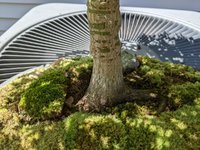Each grower is likely to have a preference based on previous experiences which may not always reflect the real potential of other options. There will also be different opinions based on each person's preferred nebari looks like - some prefer larger, horizontal (pancake) nebari while others consider less, individual roots desirable.
I've used all 3 of these options and several others and offer the following:
Root grafts are never 100% successful. Takes time (years) for new smaller roots to catch up to original larger roots if they ever do catch up. Some successful root grafts also leave scars. IMHO root grafts are better where just a few roots are needed and this one needs quite a lot of new roots.
Both ring and tourniquet will swell the trunk and a good spread of radial roots will spread the bare even more. No difference in my experience.
Ring layer requires the new roots to be higher up the trunk to allow for the ring above existing roots = shorter trunk which may be desirable or not.
Tourniquet needs to be above the roots to allow the wire to be embedded into the groove. Hard to follow uneven contours closer to large roots.
Only having photos to go on I'd probably opt for tourniquet ground layer for the tree shown.




